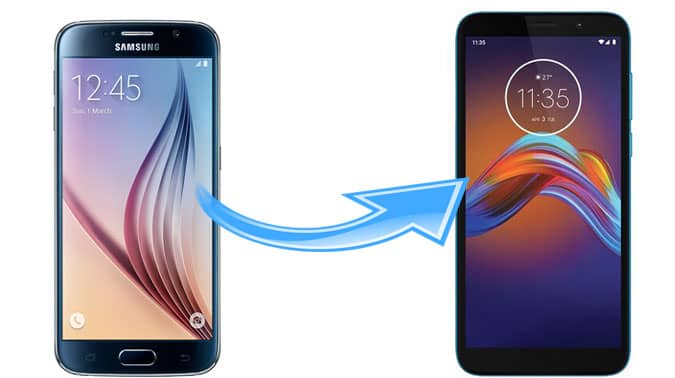In today’s ever-evolving tech landscape, smartphones are more than just communication tools – they’re gateways to information, entertainment, and productivity. But just like a car needing regular maintenance, your phone requires software updates to stay secure, perform optimally, and access the latest features. With a plethora of smartphone brands vying for your attention, understanding their software update policies becomes crucial. This comprehensive guide dissects the update landscape, revealing which brands prioritize keeping your phone up-to-date and secure.
Leaders of the Pack: Brands Prioritizing Updates
Some brands have established themselves as champions of software updates, offering extended support that keeps your phone feeling fresh and secure for years to come.

Samsung: The Undisputed Champion
Samsung reigns supreme in the software update arena, boasting a consistently impressive update policy. Their latest flagship, the Galaxy S24 series, sets a new standard with a whopping seven years of security patches and OS upgrades. This translates to potential updates up to Android 21 for S-series users. But Samsung’s commitment extends beyond flagships. Mid-range A-series phones like the Galaxy A55 and A35 are promised four major OS updates and five years of security patches, ensuring a smooth and secure experience. Even budget-conscious buyers can rejoice – the Samsung M55, part of their affordable M-series, gets four years of software updates and five years of security support, defying the notion that budget phones have to compromise on updates.
Google Pixel: Speed Demon with Staying Power
While Samsung takes the crown for the longest update commitment, Google Pixel excels in update delivery speed. Pixel 8 and 8 Pro users benefit from a remarkable seven years of support, encompassing not just Android OS upgrades and security patches, but also exciting “Feature Drops” and the latest AI advancements. This extended support period, lasting until October 2030, surpasses any previous Pixel phone and signifies Google’s dedication to keeping their devices future-proof. Additionally, Pixel 6 and later models, including the innovative Pixel Fold, are guaranteed at least five years of updates, ensuring a smooth and secure experience. For those who crave the newest Android features delivered quickly, Google Pixels are a compelling choice.
Balancing Price and Support: Navigating Mid-Tier Options
Some brands offer a tiered update policy, where the level of support corresponds to the phone’s price point.
OnePlus: A Balancing Act
OnePlus adopts a tiered approach to software updates. High-end models like the OnePlus 12 boast a more generous policy, promising four years of major Android updates and five years of security patches. On the other hand, the more affordable OnePlus 12R offers three years of Android updates and four years of security support. Similarly, the Nord series reflects this tiered approach. The OnePlus Nord 3 5G leads the pack with three years of software updates and four years of security patches, while the Nord CE 3 lags with only two major Android updates and three years of security support. Carefully considering a OnePlus phone’s price tag and its corresponding update policy is crucial before making a purchase decision.
OPPO: Transparency is Key
Being a sister company to OnePlus, OPPO adopts a similar update policy structure. High-end models like the Find X7 Ultra and 2023 flagships are promised four major Android updates and five years of security patches. The mid-range segment (OPPO F, K, Reno, and Find Lite/Neo series) receives a slightly less generous offering – two major upgrades and four years of security patches. However, for budget-conscious buyers, disappointment might lurk in the OPPO A series. Some select models might not receive any major Android updates and could be limited to just three years of security patches. While this can be a concern, OPPO deserves credit for their transparency regarding their updated policy, allowing informed purchase decisions.
Work in Progress: Brands Showing Signs of Improvement
While some manufacturers haven’t reached the pinnacle of software support yet, they’re demonstrating a commitment to improvement.
Xiaomi/Redmi/POCO: Stepping Up Their Game
Xiaomi has shown a noticeable shift towards prioritizing software updates. The recently launched Xiaomi 14 series promises four years of major OS updates with an additional year of security patches, indicating a positive trajectory. The Redmi Note 13 series is expected to receive three years of Android updates and four years of security patches, offering a decent level of support. POCO, a sub-brand of Xiaomi, presents a mixed bag. While the Poco X6 Neo offers two years of Android updates and four years of security patches, the Poco X6 Pro 5G and X6 5G are rumored to receive three years of Android updates and four years of security patches.
FAQs:
Q: How can I find out a specific phone model’s software update policy?
A: The best way is to visit the phone manufacturer’s website and search for the specific model’s support page. You can also find reliable information from reputable tech websites and review platforms.
Q: Is there a way to force my phone to receive an update?
A: It’s generally not recommended to force updates. Manufacturers release updates after thorough testing to ensure stability and compatibility. However, you can usually check for updates manually within your phone’s settings.
Q: My phone brand isn’t listed here. What should I do?
A: This article focused on major phone brands. You can research the update policy of your specific brand by following the tips mentioned in the “How can I find out a specific phone model’s software update policy?” section.
Q: Are there any downsides to keeping my phone for a long time?
A: Besides potentially outdated software, older phones might have weaker performance or security vulnerabilities. However, with brands like Samsung and Google offering extended updates, keeping your phone for a longer period can be a sustainable choice.




